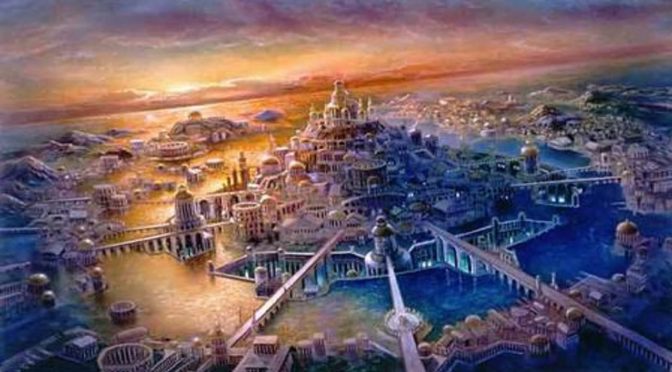(I hate that I have to say this, but this is a fictional account of the history of a fictional world. I do not believe these things, nor should you, as I am making them up. If I receive any comments that I did not do my research into these events, you will be mocked.)
In the Agent of Argyre series of books, there is an organization called the Alter Control Task Force. Though ostensibly an organization for policing activities of the Alter race, an attempt to prevent an eventual race war, they are actually representatives of a city-state on the ocean: The Republic of Argyre.
The Republic of Argyre, an artificial island anchored to an oceanic ridge in the pacific, is a city-state established by Alters for the sake of harboring their kind and establishing a relationship with the mainstream human population. Despite being an artificial island and attached to no primary landmass, the city’s structure is capable of potentially supporting all 12 to 15 million active Alters on the planet.
How did a race of people who’ve lived in hiding for centuries manage to construct such a city? Why would they build their city in the middle of the ocean? Where did they get the resources for such a task? In the Alterpedia Historia, we will answer these questions and discover the history of the Alters. Today we address…
A New Home
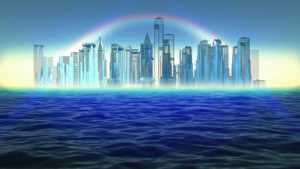
Following the devastating effects of the world wars, the Alter population worked to bring their people together and establish a homeland for themselves. With the help of several government agencies (willing and unwilling) from around the world during the cold war, the secret enclaves of the alters began to work on creating something with a stronger foundation than the previous homes had offered. Though the younger members of the growing movement were oblivious to their roots, the older generations knew that there had already been a model for an Alter-run territory – Atlantis.
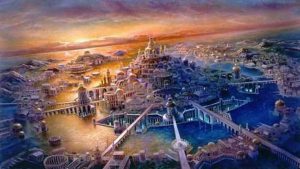
Though few had first hand experience with the location itself, the records of what Atlantis was still remained. The Alter scholars known as Magi had kept detailed histories of everything to have happened before and the designs of Atlantis were quite clear in their earliest texts. And given that the world was now very clearly divided between modern human powers, it now made sense that the Alters should return to their roots and build a home on the ocean once again.
A few challenges presented themselves to this idea at first. The original Atlantis had been built on the bridges erected between islands. However, no islands of sufficient size and proper location were made available to them. Even if they had been, the idea of buying an island from someone seemed too likely to draw attention and any island that they could purchase would be well within the jurisdiction of another country. As a result, it was decided among the higher ups that the best course of action was to do something no human would expect – build their own island over international waters.
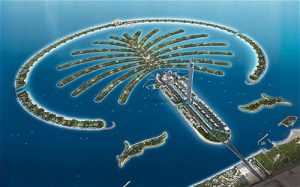
Initially sounding impossible, much of the early work on creating this new homeland was in simply solving the engineering problems involved in creating a new land mass. By the 1960s, several of the researchers had come to the conclusion that the solution was to begin with a massive building-like structure instead – what would eventually be dubbed an “arcology” by the architect Paolo Soleri. According to these individuals, such a building, sufficiently large enough to hold the Alter population, could be anchored to an oceanic ridge in the pacific and stretch from the top of a sea mount to the ocean’s surface. From there they argued adding additional space and resources could be accomplished by using large customized ships for modular expansions.
Though there were several potential issues with creating an arcology, the benefits outweighed them and some were partially negated by their location. The lack of sufficiently strong materials to support a vertical structure in open air could be offset by using the water for active support. Some of the requirements on food and space could also be offset with fishing operations and underwater domes for the aquatic Alter races. The deeper sections, secluded from sunlight, would be seen as a benefit to the obligate nocturnal races. And, though research began in earnest into other power sources, geothermal vents on the ocean floor seemed like a power source this arcology would be uniquely ready to take advantage of.

While construction began on the seafloor almost immediately with the help of aquatic races, the plan was still lacking several key details. The most difficult challenges of the concept dealt with the staggering numbers of active Alters projected to eventually arise. Given the rate of activation and current human population, researchers believed that the active Alter population could reach 16 million by the 2040s. Though space in itself was relatively easy there would be shortages on food, water, and energy not long after completing the structure unless these issues were addressed.
Though fishing operations could supplement the food supply with simple infrastructure, several Alter races were obligate herbivores and carnivores. For the herbivores, research began into advanced hydroponic and aeroponic techniques using the expertise of Dryads, Nereids, and similar races gifted with plant growing. In the meantime, Kappa would contribute advanced farming techniques for the surface modules while Merfolk would ramp up their traditional seaweed harvesting into an industrial scale. For the carnivores, however, something far more experimental and unusual would be required.
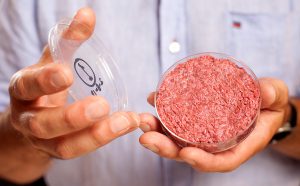
Though synthetic meat wasn’t actively researched by humanity until the 21st century, Alter research into the subject began in earnest in the mid 20th. Using research into their own biology, in fact, the Alters began to grow meat and other animal products in factory settings that were both far more efficient and more ethical than the factory farming relied on by contemporary humans. These meats, after a couple decades of research, were comparable to the natural product and became a food staple for many Alters even before the completion of the arcology. And, while not originally intended in this fashion, one peculiar food requirement was soon addressed by the same research.

Though Vampires and similar creatures did not specifically require blood, the idea of a purely vegetarian liquid diet was revolting to many of them and caused several Vampire covens to be holdouts of the arcology plan. However, the synthetic meat development eventually resulted in the creation of synthetic blood as well. While researching into recreating specific tissues and textures, one group of scientists ended up creating blood along with the expected flesh and bone. Realizing that they’d found a solution to the Vampire problem, these researchers began working on engineering an organ which could do this on purpose. The blood they got, dubbed “Omega”, would eventually become even more important than simply feeding Vampires – as a universal donor, these organs could replace all need for human blood donors.

In the meantime, other researchers went to work at desalination and energy production technologies. Desalination work was actually easier than expected, with several technologies developed by humans in the following decades. However, many of these techniques had high energy demands and would put more pressure on the already questionable energy supply. As the earliest settlers began to move into the completed sections of the arcology underwater, the energy demands were already exceeding original projections. Needing to supply power for proper air circulation, light generation, food growth, and climate control – the addition of desalination on top of it proved to be too much. Geothermal plants were already underway, but the addition of something like fission reactors was deemed to draw too much attention. Research began into fusion, but in the meantime the idea was to supplement power with green technologies like tidal generators and (ironically for some) solar. It was during this time that a group of Elves remembered a technology developed once for the Knights Stellar centuries prior.
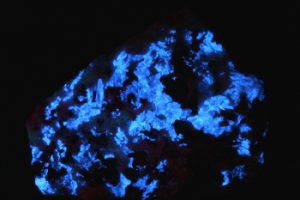
Known as “light elf stone” in the ancient times, the Elves had long ago discovered methods to convert sunlight into energy, store it, and emit the energy again in UV wavelengths. Though the original stone was primitive and unrefined, generally only used to augment silver plated weapons, the sudden need for better solar technology inspired going back and examining if the material could be refined. Using early nanotechnology research in the 1980s, these Elves began to try to refine their stone on a molecular scale, producing specific structures within the crystal. The results were promising, capturing not only visible light but infrared radiation, and further developments found steady increases in efficiency. Using techniques that wouldn’t be discovered by mainstream humans for decades to come, the Elves soon produced the final product: “aurorastin”.
Their work completed just in time, as the growing arcology was pushing the limits of their four primary power sources already. Tidal and geothermal energy were producing most of the energy at the time, with solar and wind being only secondary supplies. But with the inclusion of aurorastin, solar efficiency increased dramatically and soon enough the material was even applied to the geothermal plants to convert the heat directly rather than relying wholly on turbines. This boost on both fronts meant that the arcology’s power supply were now sufficient and relatively easy to expand in the future – at least for long enough to allow researchers to crack fusion power.
By the turn of the 21st century, enough of the arcology had been completed underwater to house a substantial population and begin to form a more formal government. The agencies of the past took the forefront in organizing the earliest elections and beginning ballot initiatives to determine several aspects of how this new country would be run. One of the first decisions to be made by the people was the name of this country. Though previously just referring to it as “the arcology”, from around the year 2000 up to their eventual reveal to the rest of the world, this place would now be known as The Republic of Argyre.
Politics within Argyre were somewhat contentious in the first decade after getting a name. Many Alter races had long maintained independent enclaves around the world and were used to self governance. In fact, early movements within Argyre were leaning sharply towards Libertarian and even Objectivist ideals. However, in a stroke of irony, these movements were soon suppressed by the release of a game featuring an underwater city-state…
Which made many in Argyre reconsider this position.
(I write novels and dabble in screenplays. Soon, I will have news to share on these things on my twitter. Witness me!)


